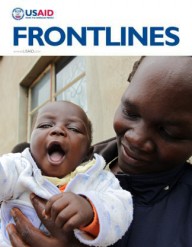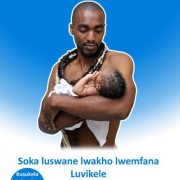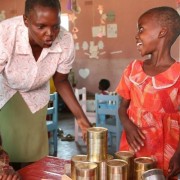 An activist sets up a red ribbon during the commemoration of World AIDS Day in San Salvador.
Jose Cabezas, AFP
An activist sets up a red ribbon during the commemoration of World AIDS Day in San Salvador.
Jose Cabezas, AFP
 An activist sets up a red ribbon during the commemoration of World AIDS Day in San Salvador.
Jose Cabezas, AFP
An activist sets up a red ribbon during the commemoration of World AIDS Day in San Salvador.
Jose Cabezas, AFP
Scaling Up Voluntary Medical Male Circumcision for HIV Prevention for Maximum Public Health Impact
These were my last words during my first presentation at the 2011 PEPFAR Annual Meeting in Johannesburg this past May. Needless to say, there were a lot of raised eyebrows, a few laughs and a couple of questions as to whether I had a male circumcision tent set up in one of the breakout rooms.
But no – the goal, of course, was not to perform a medical procedure on my USG colleagues. It was to heighten their understanding of a cost saving and effective form of HIV prevention that, despite the science and clinical findings, still does not get the recognition and broad support it should.
Soon after the World Health Organization released findings from three randomized trials that showed male circumcision prevents 60% of new HIV infections in men who have heterosexual sex, countries in Eastern and Southern Africa with technical and financial support of PEPFAR, BMGF, WHO, UNAIDS began scaling up efforts around voluntary medical male circumcision (VMMC).
PEPFAR, through USAID, CDC, DOD, Peace Corps, and NIH, has continually supported country governments in their VMMC efforts. Kenya’s program is one worth noting. In two short years, the national program has reached 66 percent of its VMMC goals. This means – based on
USAID and UNAIDS estimates that Kenya is on its way to averting 47,000 adult HIV infections between 2009 and 2025, and can save $247 million along the way. This is no small feat.
Now, working to support other countries in Africa, such as
Swaziland – which is scaling up VMMC services through the Soka Uncobe, an accelerated saturation initiative – we are confident VMMC has the potential to avert more than 4 million adult HIV infections in Eastern and Southern Africa in the next 16 years.
That is what PEPFAR is all about: making smart investments to save more lives.
After our meetings, I felt my colleagues were more inclined to return home and explain VMMC to their country governments in a compelling and effective way. They saw the value of VMMC as a critical HIV prevention tool – one that can be done in a safe medical environment and rolled out on a wide scale in almost any community.
But, to reach our ultimate target – the decision makers and communities in country – we knew we had to go beyond the presentations. So, with the help ofAIDSTAR One, we teamed up with Lisa Russell, an award-winning filmmaker, to create In It to Save Lives: Scaling Up Voluntary Medical Male Circumcision for HIV Prevention for Maximum Public Health Impact.
The film examines the expansion of male circumcision as an HIV prevention intervention and tells the story of how governments and communities in Kenya and Swaziland have embraced VMMC in their countries. The goal of the film is to show that VMMC services can be replicated and expanded to reach the critical mass needed for maximum public health impact.
Now, 30 years into the epidemic, there are roughly 34 million currently living with HIV/AIDS, with another 7,000 new HIV infections each day. With numbers like these, it’s more important than ever to focus on reaching those most in need with prevention, treatment, care and support messages and programs.
Through a variety of prevention interventions, including VMMC, we hope to turn the tide of the HIV epidemic.
Watch the video and download additional resources at AIDSTAR-One.
This article originally appeared on the Impact Blog in June 2011












Comment
Make a general inquiry or suggest an improvement.